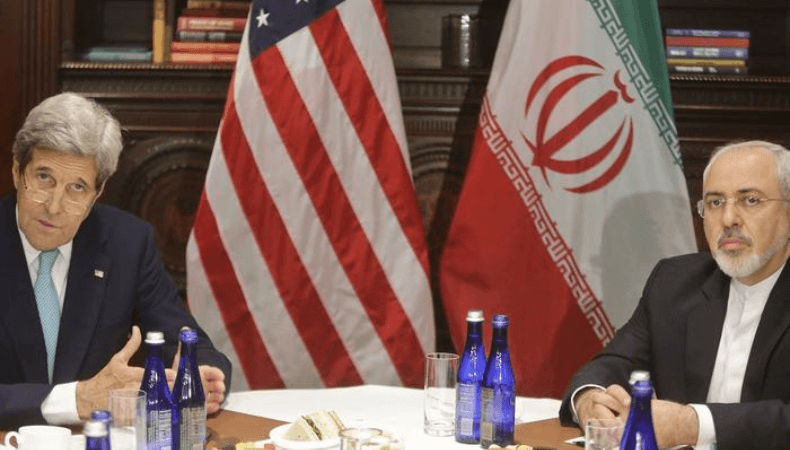How the U.S. Strikes on the Houthis Signal a New Approach to the Nuclear Deal with Iran

On January 12, 2024, the U.S. and the U.K. launched a large-scale, retaliatory strike against the Iranian-backed Houthis in Yemen, using warship-launched Tomahawk missiles and fighter jets.
The strike targeted more than a dozen sites used by the Houthis for launching drone and missile attacks on commercial ships in the Red Sea, which have threatened the vital waterway and the global oil supply. The strike was the most significant military response to the Houthi attacks, which began after Israel’s war in Gaza broke out in October 2023.
The U.S. said the strike was aimed at degrading the Houthis’ capabilities and deterring their future attacks, and that it was conducted in self-defense and in support of its allies and partners.
The U.S. also said the strike was not intended to escalate the conflict or undermine the diplomatic efforts to end the war in Yemen. However, the Houthis vowed to retaliate and accused the U.S. and the U.K. of being complicit in the Saudi-led coalition’s aggression and blockade on Yemen.
The implications for the nuclear deal with Iran
The U.S.-led strike on the Houthis also had implications for the ongoing negotiations to revive the 2015 nuclear deal with Iran, formally known as the Joint Comprehensive Plan of Action (JCPOA).
The deal, which was signed by Iran and six world powers, including the U.S., aimed to limit Iran’s nuclear activities in exchange for sanctions relief. However, the deal was abandoned by former President Donald Trump in 2018, who reimposed sanctions on Iran and pursued a “maximum pressure” campaign. Iran, in response, resumed and expanded its nuclear activities and reduced its compliance with the deal.
President Joe Biden, who took office in 2021, expressed his willingness to rejoin the deal if Iran returned to full compliance.
However, the negotiations, which began in April 2021 in Vienna, faced many challenges and obstacles, such as the hardline stance of Iran’s new president, Ebrahim Raisi, who took office in August 2021, the expiration of the monitoring agreement between Iran and the International Atomic Energy Agency (IAEA) in September 2021, and the regional tensions and conflicts, such as the Gaza war and the Houthi attacks.
The U.S.-led strike on the Houthis could be seen as a signal of a new approach by the Biden administration to the nuclear deal with Iran, which is based on a combination of pressure and diplomacy. On one hand, the strike showed that the U.S. was willing to use force to counter Iran’s regional activities and proxies, and to protect its interests and allies.
On the other hand, the strike also showed that the U.S. was not seeking to provoke or isolate Iran, and that it was still open to dialogue and cooperation. The U.S. hoped that the strike would send a clear message to Iran that its malign behavior would not be tolerated, and that it would have to make a choice between confrontation and compromise.
The prospects for the future
The U.S.-led strike on the Houthis could have a positive or negative impact on the prospects for the future of the nuclear deal with Iran, depending on how Iran and the other parties react and respond. If Iran views the strike as a sign of U.S. hostility and aggression, and decides to retaliate and escalate, the chances of reviving the deal would diminish, and the risk of a wider war would increase.
If Iran views the strike as a sign of U.S. seriousness and resolve, and decides to de-escalate and engage, the chances of reviving the deal would improve, and the opportunity for a broader dialogue would emerge.
The other parties to the deal, such as China, Russia, France, Germany, and the U.K., also have a role and a responsibility in influencing the outcome of the situation. They could either support or oppose the U.S.-led strike, and either encourage or discourage Iran’s participation in the negotiations. They could also propose or oppose additional measures or incentives to facilitate or complicate the process of restoring the deal.
The U.S.-led strike on the Houthis was a significant and consequential event that had implications and ramifications for the future of the nuclear deal with Iran, and the stability and the order of the region and the world.
The strike was not only a military action, but also a diplomatic signal that reflected the U.S. ‘s stance and strategy in dealing with the complex and contentious issue. The strike, therefore, required careful and prudent planning and execution, as well as constant and constructive dialogue and consultation, among all the parties concerned.




